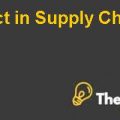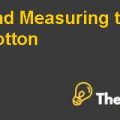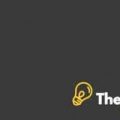INTRODUCTION
Procter and Gamble (P&G), the world’s largest consumer products company, serves nearly 5 million consumers around the world. P&G has one of the largest portfolios of trusted, quality and leadership brands. The purpose of the brand is to provide superior quality and value that improves customers’ lives, which leads to customer satisfaction. P&G was established in India in 1965, it serves 650 million consumers across the country.
P&G’s superior product proposition and technological innovation enable the company to achieve market leadership and higher growth rates. The company is sustaining an effort to focus support on environmental protection as well as a social responsibility to gain more customer trust on the products launched by the company. At P&G, the employees and management who develop and builds are the foundation of company’s success. The company operates under three entities in India, such as Procter and Gamble Hygiene and Health care Limited, Gillette India limited, and Procter and Gamble Home products.
By 2015, the company started Project 2-3-4, to crack open the Indian market. The company achieved its leading edge in six brands such as healthcare, blades & razors, feminine care, baby care, anti-aging skin care, and hair care. However, the brands that P&G dominated are still small. Hindustan Unilever Limited is the leader in home and personal care. Moreover, P&G gained success on premium brands such as Ariel and Whisper ultra, globally as well as in India. Skin care with anti-aging and fairness creams are the best options for the company, which cover the majority of market share of women’s in India.
Furthermore, P&G signed an agreement with Godrej to manufacture and market consumer products in India. However, this alliance failed to achieve its targets and was terminated in 1996. P&G has a market share of 12% with Tide and Ariel. Tide detergents were launched in 2000, become a largest global brand in its portfolio of 334 brands. When the tide was launched in the premium segment at a price of Rs.120, it gained less consumer acceptance, because it is not affordable for the majority of consumers. However, when the company reduces its price, it gains market share steadily.
There are many competitors of P&G in the laundry detergent industry, such as Hindustan Unilever Limited, Nirma, and Ghari brand. Nirma became the largest detergent brand, and gained market share in rural areas with low price. P&G should develop a strategy, in order to penetrate in rural areas, because the majority of its population is in rural areas. Moreover, Hand-wash detergents are used by the economy segment, which is more than three times the size of the powder detergents. Wheel, Nirma, and Ghari competed in the economy segment, and gained more market share in rural areas, due to cost effective strategy.
POTENTIAL PROBLEMS AND CHALLENGES
As a case states, there are numerous potential problems and challenges faced by P&G such as,
- To penetrate detergent products in rural market, and gain market share
- Product line expansion, and fill the void at the bottom of the pyramid
- Product pricing strategy
- Increase in the advertising budget
- Increase company’s Per capita spending on its products
- Little product differentiation
- Gain more market share of premium brands
- Launch more variants for its existing brands
- To catch up the market share of Hindustan Unilever Limited
OPPORTUNITIES
Bottom of the Pyramid
The majority of the population of Indians consumer products belongs to the rural category, which means the bottom of the pyramid. However, many consumers are thriving o improves its lifestyle and increase its income in the company years, but still many of them cannot get the opportunity to flourish their lifestyle. Therefore, it is important for the company to focus on the bottom of the pyramid and develop strategy to provide them benefit in terms of price and quality, in order to gain more customer satisfaction.
Procter And Gamble India Gap In The Product Portfolio CAse Solution
Economy Segment
Leading brands are not only focusing on premium brands, but also increasing their market share by targeting the economy segments. However, hand wash detergents used by the economy segment are more than three times the size of powder detergents. The majority of rural area consumers prefer to wash their cloths from hand wash detergents such as bar, due to low price, and lack of technology facilities. Brands like Nirma and Ghari havealready become global brands. In order to achieve those targets and to be able to drive the company’s sales,their brand equity should be built at low cost.................
This is just a sample partial case solution. Please place the order on the website to order your own originally done case solution.











